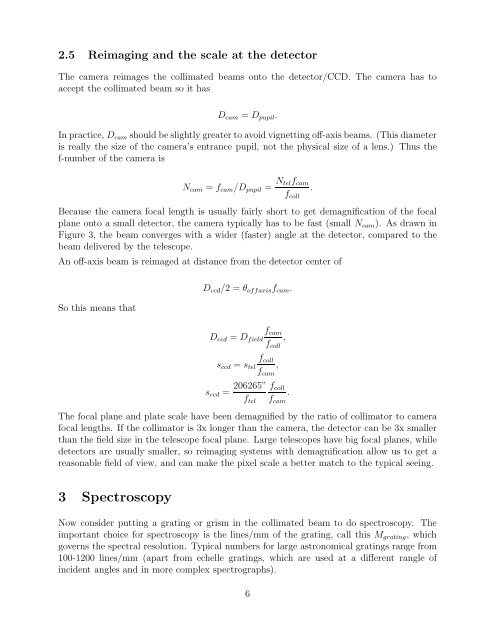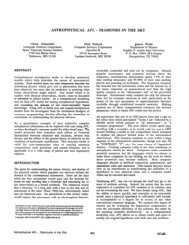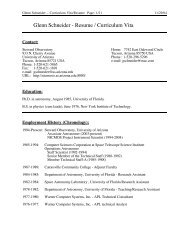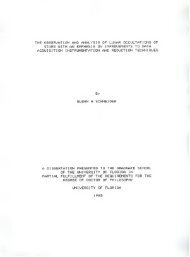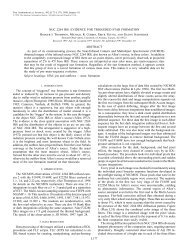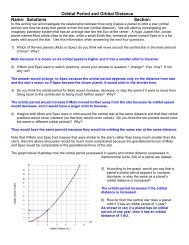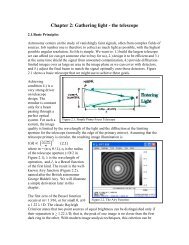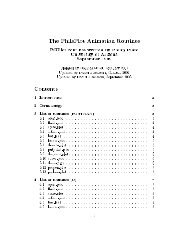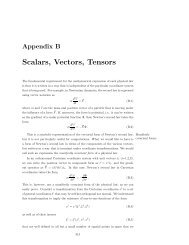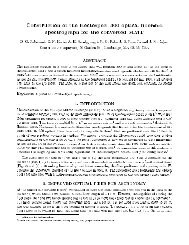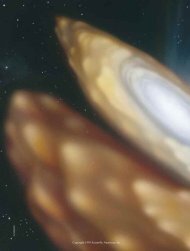PDF version of this essay that looks nicer - University of Arizona
PDF version of this essay that looks nicer - University of Arizona
PDF version of this essay that looks nicer - University of Arizona
You also want an ePaper? Increase the reach of your titles
YUMPU automatically turns print PDFs into web optimized ePapers that Google loves.
2.5 Reimaging and the scale at the detectorThe camera reimages the collimated beams onto the detector/CCD. The camera has toaccept the collimated beam so it hasD cam = D pupil .In practice, D cam should be slightly greater to avoid vignetting <strong>of</strong>f-axis beams. (This diameteris really the size <strong>of</strong> the camera’s entrance pupil, not the physical size <strong>of</strong> a lens.) Thus thef-number <strong>of</strong> the camera isN cam = f cam /D pupil = N telf camf coll.Because the camera focal length is usually fairly short to get demagnification <strong>of</strong> the focalplane onto a small detector, the camera typically has to be fast (small N cam ). As drawn inFigure 3, the beam converges with a wider (faster) angle at the detector, compared to thebeam delivered by the telescope.An <strong>of</strong>f-axis beam is reimaged at distance from the detector center <strong>of</strong>So <strong>this</strong> means <strong>that</strong>D ccd /2 = θ <strong>of</strong>faxis f cam .D ccd = D fieldf camf coll,s ccd = s telf collf cam,s ccd = 206265”f telf collf cam.The focal plane and plate scale have been demagnified by the ratio <strong>of</strong> collimator to camerafocal lengths. If the collimator is 3x longer than the camera, the detector can be 3x smallerthan the field size in the telescope focal plane. Large telescopes have big focal planes, whiledetectors are usually smaller, so reimaging systems with demagnification allow us to get areasonable field <strong>of</strong> view, and can make the pixel scale a better match to the typical seeing.3 SpectroscopyNow consider putting a grating or grism in the collimated beam to do spectroscopy. Theimportant choice for spectroscopy is the lines/mm <strong>of</strong> the grating, call <strong>this</strong> M grating , whichgoverns the spectral resolution. Typical numbers for large astronomical gratings range from100-1200 lines/mm (apart from echelle gratings, which are used at a different rangle <strong>of</strong>incident angles and in more complex spectrographs).6


